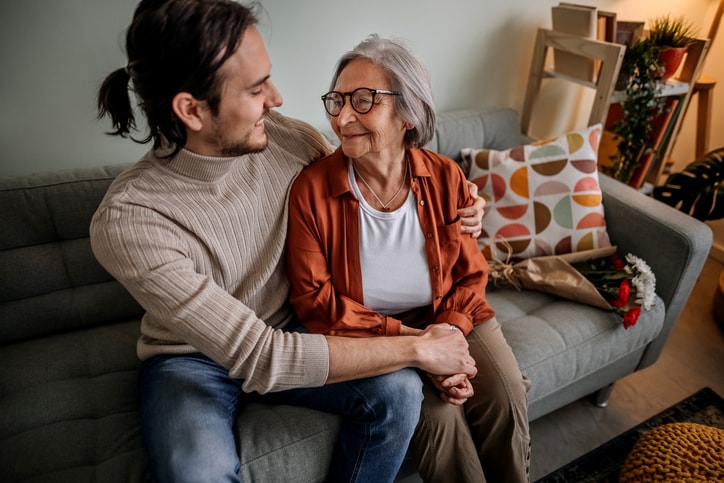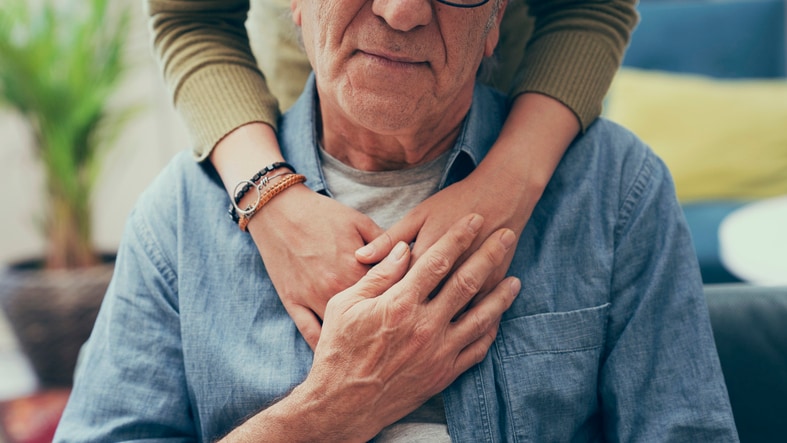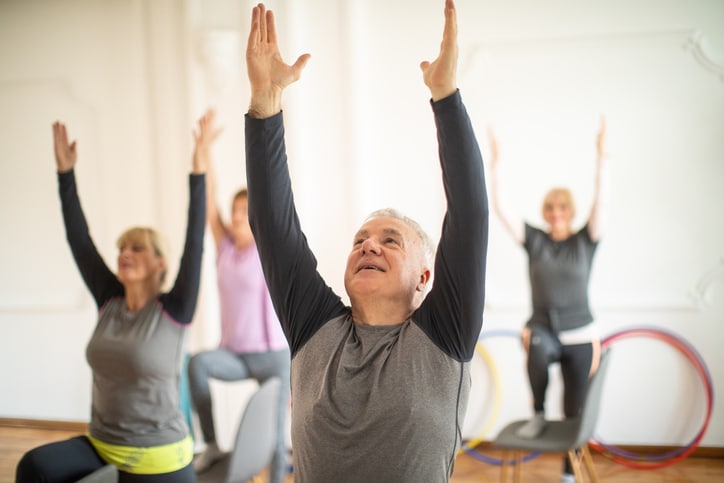Physical changes occur with aging for everyone. If the older adult you live with or care for routinely follows an exercise program — great! If not, you may want to encourage them to start. Some of the benefits of regularly exercising include:
- Delaying or preventing the onset of disabilities or diseases such as diabetes, heart disease, obesity and osteoporosis.
- Reducing pain from arthritis.
- Helping with anxiety and depression through better sleep and feelings of well-being.
- Reducing the risk of falls, the most common cause of nonfatal injuries in adults over age 65.
Getting started with exercise
How can you help the older adult in your life choose an activity that will be enjoyed and, most importantly, done regularly? Consider their interests, health and physical limitations, as well as the ease of accessing the activity. Many senior centers and recreation departments offer a wide range of classes and programs.
As much as possible, four different types of activities should be incorporated into an exercise regimen, as they provide different health benefits.
- Endurance activities increase the heart rate and breathing. Including walking, jogging or dancing, they help improve the cardiovascular system.
- Strength exercise such as weight training can help build up muscles and reduce age-related muscle loss.
- Stretching exercises help keep the body flexible and able to move easily.
- Balance exercises help improve balance, reducing the risk of falls.
As each person has different health issues and medications, checking in with a health care provider before beginning is key to preventing injuries. In addition, you should talk with a health care provider if the person plans on working up to a vigorous level of activity or has any of the following active problems:
- Dizziness or shortness of breath.
- Chest pain, pressure, or a feeling that the heart is racing or skipping.
- Blood clots in the legs.
- Infection or a fever.
- Ongoing, significant, and undiagnosed weight loss.
- Foot or ankle sores that won’t heal.
- Swelling of the joints.
- Active eye issues such as a detached retina, or recent eye surgery.
- Hernia.
- Pain or trouble walking after a fall.
- Other recent surgery.
Staying safe while exercising
Ready, set, time to get moving! In addition to following the health care provider’s specific suggestions, these tips can help reduce the risk of an injury.
- Ease into it: Start an activity slowly and build up gradually. If the activity is stopped for a few weeks, it should be started again slowly.
- Safety gear: If needed, appropriate safety gear should be worn. For example, helmets should be worn for bike riding.
- Sun protection: When outside, remember sun protection, such as sunscreen, sunglasses and/or a hat. Remember that certain medications cause the skin to be more susceptible to sunburn — ask your health care provider about your senior’s medications.
- Stretch: Before moderate or vigorous exercising, warm up the muscles with light arm pumping or walking.
- Hydrate: Make sure to increase fluid intake (unless the physician says otherwise) while exercising.
- Breathing: With strength exercises, teach the person not to hold his or her breath, otherwise changes in blood pressure can occur. It’s better to breathe out when lifting a weight and breathe in when relaxing.
- Alignment: Remind the individual to bend from the hips, keeping the back straight.
- Safe swimming: For swimming, note how deep the water is. Water shoes can help prevent slipping or injuries to the feet.
Chronic disease and exercise
Having a chronic disease such as diabetes or congestive heart failure (CHF) doesn’t necessarily preclude people from exercising, but they do need to pay attention to their symptoms and communicate with their physicians if concerns arise.
If the individual has either an abdominal aortic aneurysm or critical aortic stenosis, be sure to check with their physician before beginning an exercise program.
- Diabetes: People with diabetes may need to have their diabetes medications adjusted, so their blood sugar levels don’t become too low with exercising.
- Chronic heart failure: People with CHF can exercise — but only when their disease is stable. They should not exercise when they are having an acute exacerbation.
- Heart attack: Activity is often recommended as part of recovery for people who have had a heart attack. Ask for more information when following up with the physician.
- Alzheimer’s disease: According to the Mayo Clinic, moderate exercise (such as walking for 20 minutes, three times a week) can be beneficial for people with Alzheimer’s disease.
- Feelings of depression, common in people with Alzheimer’s disease, have been shown to be reduced.
- Exercise can help decrease the risk of falling and sustaining a subsequent injury.
- With exercise, people may sleep more soundly at night, resulting in less agitated or wandering nighttime behaviors.
- Exercise combined with a meaningful activity and social interaction may help reduce wandering behavior.
Exercise and arthritis
Interestingly, exercise does not worsen the joint pain and stiffness of arthritis. In fact, the opposite is true: not exercising can lead to painful and stiff joints! Depending on the type and location of arthritis, exercises such as range of motion, strengthening and aerobic activities can help strengthen muscles, control weight and maintain bone strength.
If increased joint swelling, redness or pain is experienced, try taking a day off from exercising. For activities like yoga or tai chi, avoid positions or movements that are particularly painful or that cause weight to rest on sore joints.
People with arthritis may also derive comfort from the following:
- Applying heat for about 20 minutes to relax joints and muscles before beginning to exercise
- Moving joints gently to warm up
- Using slow and easy movements when exercising
- Applying a cold pack to the joints for 10-15 minutes after exercising to reduce swelling and pain
Osteoporosis
As people age — and especially for women after menopause — they experience bone loss, which can lead to spinal problems or broken bones. Exercise, which helps to increase muscle strength and improve balance, can decrease the chance of falling and becoming injured.
Physicians, guided by the person’s health and degree of bone loss, can recommend an appropriate type of exercise program.
- Strength training: Use weights, resistance bands or water exercises to strengthen muscles, help stretch the back to improve posture, maintain bone density and slow down bone loss.
- Cardio health: In addition to improving cardiovascular health, aerobic activities — such as walking and dancing — help slow bone loss.
- Flexibility: Stretching exercises help with posture and help increase the mobility of joints.
A few activities or movements are not recommended for people with osteoporosis:
- High-impact activities like jumping or jogging, or jerky movements could result in weakened bones becoming fractured.
- Exercises involving bending forward and twisting the waist could compress bones in the spine.
Signs that an activity is too strenuous
Although exercising can make people feel sore and tired, it should not cause exhaustion or severe pain. The following symptoms can signal that the activity is too strenuous and needs to be reconsidered. If you have any concerns or worries, be sure to contact the person’s health care provider.
- Breathing so hard that it’s difficult to speak
- Dizziness
- Chest pain
- Joint swelling
- Decreased range of motion
- Pain that doesn’t go away
With the proper safeguards, seniors should be able to start exercising and reap the benefits of increased energy and vitality.





